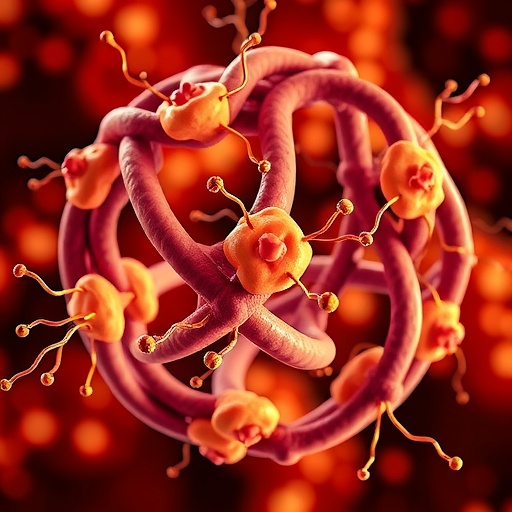In the realm of adolescent health and pharmacology, recent findings from a University of Michigan study reveal a notable shift in the landscape of prescription stimulant use among teenagers. Contrary to widespread apprehensions surrounding increased prescribing of stimulants for attention-deficit/hyperactivity disorder (ADHD), data now illustrate a significant decline in the nonmedical use of these drugs over the past two decades. This revelation comes at a time when stimulant prescriptions have risen nationally, underscoring a complex but encouraging trend within adolescent populations.
The investigation, spearheaded by research associate professor Philip Veliz from the University of Michigan’s School of Nursing, meticulously analyzed data spanning from 2005 to 2023. These data were drawn from the Monitoring the Future Study, a robust, longitudinal annual survey tracking substance use among 8th, 10th, and 12th-grade students. The study’s design allowed for a granular assessment of lifetime medical and nonmedical stimulant use, providing representative insight into evolving patterns amid shifting prescribing practices and societal attitudes.
Medical use of prescription stimulants to manage ADHD symptoms among adolescents showed a slight uptick throughout the studied period, consistent with broader national trends in diagnosis and treatment. Despite this increase in medically supervised use, the crux of the investigation was the fate of nonmedical consumption – usage without prescription or for recreational effects – which the study found to have declined from 10% lifetime prevalence in 2005 down to 6% in 2023. This reduction is particularly striking against the backdrop of rising stimulant availability.
.adsslot_KUJnVeZL4S{width:728px !important;height:90px !important;}
@media(max-width:1199px){ .adsslot_KUJnVeZL4S{width:468px !important;height:60px !important;}
}
@media(max-width:767px){ .adsslot_KUJnVeZL4S{width:320px !important;height:50px !important;}
}
ADVERTISEMENT
This trend reversal holds significant public health implications. While initial expectations might have predicted a parallel surge in nonmedical use accompanying increased medical prescriptions, the data suggest that adolescent misuse has not only stabilized but diminished substantially. Veliz emphasizes that this development aligns with the hopes of parents and clinicians eager to see controlled prescription use without corresponding misuse escalation, highlighting the effectiveness of nuanced intervention strategies.
Certainty regarding this downward trajectory is strengthened by the consistency of lifetime medical use prevalence, which remained around 8% in both 2005 and 2023. This steadiness, paired with a mild increase in current use, indicates that while more adolescents are responsibly benefitting from stimulants under healthcare supervision, fewer are engaging in unauthorized or recreational use. Such findings challenge the narrative that medical accessibility inevitably fuels misuse, suggesting instead that the two phenomena can diverge significantly with proper public health frameworks.
Researchers posit that several intersecting factors may be driving these positive developments. Enhanced public health messaging targeting the dangers of prescription stimulant misuse, refined prescribing guidelines emphasizing cautious and individualized treatment, and temporary shortages of stimulant medications have all likely contributed to the contraction in nonmedical adolescent use. These factors collectively paint a picture of a healthcare ecosystem progressively better equipped to balance therapeutic access against abuse potential.
Supporting this interpretation is the pattern observed in broader prescription drug misuse trends. Similar declines in nonmedical use have been documented for other controlled substances, including opioids and benzodiazepines, among youth populations. This suggests systemic shifts in both medical practice and cultural perceptions towards prescription drug safety and misuse deterrence, likely reinforced by increased regulatory scrutiny and educational outreach.
The study’s methodological rigor and longitudinal scope provide a compelling evidence base for clinicians and policymakers weighing the risks and benefits associated with stimulant medications. Understanding that medical use and misuse can follow distinct trajectories enables the development of tailored strategies focused on maximizing treatment efficacy while minimizing abuse. Such nuance is essential amid ongoing debates about ADHD diagnosis rates and prescription practices.
Co-authors of the research include notable scholars from multiple institutions, including Sean Esteban McCabe, Vita McCabe, John Jardine from the University of Michigan, Ty Schepis from Texas State University, Emily Pasman from the University of Illinois Chicago, and Timothy Wilens from Massachusetts General Hospital. This collaborative academic effort underscores the interdisciplinary importance of the issue, combining epidemiological, clinical, and pharmacological expertise.
Published in the prestigious Journal of the American Medical Association (JAMA) on July 29, 2025, the study was financially supported by the National Institute on Drug Abuse (NIDA) and the U.S. Food and Drug Administration (FDA). Their investment reflects the critical priority placed on understanding and addressing adolescent substance use as part of broader public health initiatives.
In conclusion, this investigation articulates a cautiously optimistic narrative in adolescent stimulant use dynamics. As prescription rates climb modestly, concurrent declines in misuse reveal the promise of effective public health interventions and evolving clinical practices. These insights pave the way for informed policymaking that safeguards adolescent well-being while ensuring access to needed ADHD treatments, situating the findings at the forefront of contemporary pharmacological research and health policy discourse.
Subject of Research: Patterns of medical and nonmedical use of prescription stimulants among U.S. adolescents
Article Title: Nonmedical use of prescription ADHD drugs among teens has dropped
News Publication Date: 29-Jul-2025
Web References: https://jamanetwork.com/journals/jama/article-abstract/2836875
References: Veliz P, McCabe SE, McCabe V, Jardine J, Schepis T, Pasman E, Wilens T. Trends in Medical and Nonmedical Use of Prescription Stimulants Among US Adolescents. JAMA. 2025; DOI: 10.1001/jama.2025.11260
Keywords: Health and medicine, Drug studies, Illicit drugs, Stimulants, Antihypertensive activity, Adolescents
Tags: ADHD treatment in teenagersadolescent health studiesMonitoring the Future Studynonmedical ADHD medication usenonmedical use of prescription drugspharmacology and adolescentsprescription stimulant use declinesocietal attitudes towards ADHDsubstance use among adolescentsteen prescription drug use trendstrends in ADHD medication prescriptionsUniversity of Michigan research findings





